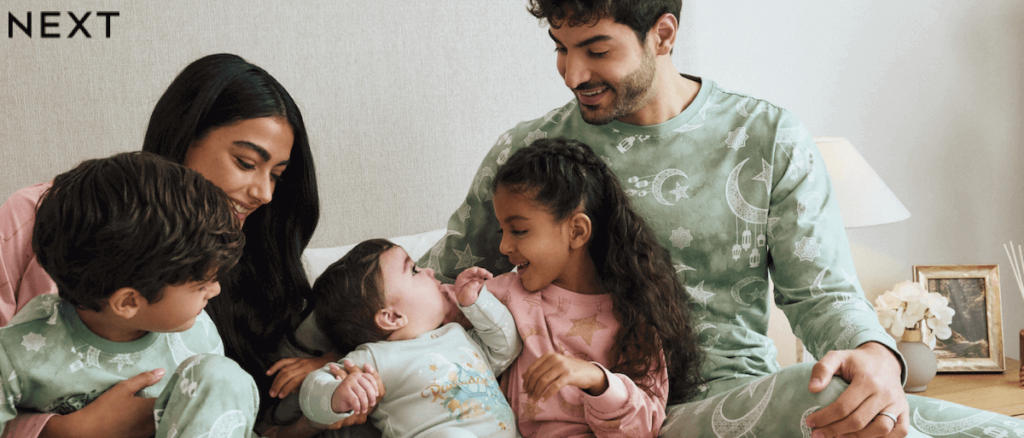Eid is one of the most significant festivals celebrated by Muslims worldwide. It marks the
end of Ramadan, the holy month of fasting, and is a time of joy, gratitude, and communal
celebrations. In Saudi Arabia and the United Arab Emirates (UAE), Eid is not only a religious
occasion but also an opportunity for people to showcase their rich cultural heritage through
fashion and style.
Eid’s fashion in Saudi Arabia and the UAE is a vibrant reflection of the region’s diverse
traditions and customs. Traditional clothing holds a special place during this festive period,
allowing individuals to embrace their cultural identity and express their sense of style.
In Saudi Arabia, men typically wear the “Thobe,” a long white robe made of lightweight
fabric, often adorned with intricate embroidery. The Thobe is complemented by a “Ghutra”
or “Shemagh,” a traditional headscarf worn in various styles. It is common to see men
wearing the Ghutra either in a simple, folded manner or secured with an “Iqal,” a black cord
that holds the scarf in place. Together, the Thobe, Ghutra, and Iqal create a timeless and
elegant look that is synonymous with Saudi Arabian culture.

For women in Saudi Arabia, the traditional attire is the “Abaya.” The Abaya is a loose-fitting
black cloak that covers the entire body, worn over regular clothing. While black is the
predominant color, modern Abayas now come in a variety of styles and designs, featuring
intricate embroidery, embellishments, and even colorful accents. The Abaya is often paired
with a headscarf known as the “Shayla” or “Tarha,” which covers the hair while allowing the
face to remain visible. This combination of the Abaya and headscarf not only represents
modesty but also showcases the elegance and sophistication of Saudi women.
Similarly, the UAE has its distinct fashion customs during Eid. Men commonly wear the
“Kandura” or “Dishdasha,” a long, ankle-length white robe made of lightweight fabric. The
Kandura is often accompanied by an embroidered “Ghutra” and a black corded “Agal” to
hold the Ghutra in place. The UAE’s traditional men’s attire embodies grace, simplicity, and
cultural pride.

In the UAE, women celebrate Eid by adorning themselves in stunning traditional garments
such as the “Boushiya” or “Abaya.” The Boushiya is a loose-fitting, floor-length dress made
from luxurious fabrics like silk or satin, featuring intricate embroidery, beadwork, or sequins.
Women pair the Boushiya with a “Sheyla,” a colorful, lightweight headscarf that adds a
touch of elegance and individuality. The UAE’s traditional women’s attire reflects the
country’s rich heritage and the women’s sense of fashion-forwardness.
Eid’s fashion in Saudi Arabia and the UAE goes beyond traditional attire. It extends to the
accessories, jewelry, and intricate details that complete the overall look. Both men and
women adorn themselves with traditional jewelry pieces such as gold necklaces, bracelets,
and rings, often showcasing intricate craftsmanship and designs. These accessories add a
touch of opulence and cultural significance to the Eid celebrations.
In recent years, the fashion scene in Saudi Arabia and the UAE has witnessed a fusion of
traditional and contemporary styles during Eid. Fashion designers and brands have taken
inspiration from the rich cultural heritage, infusing modern elements into traditional
clothing. The result is a captivating blend of fashion that combines tradition with innovation.
Contemporary Abayas now feature unique cuts, modern silhouettes, and a wide range of
colors, allowing women to experiment with their style while remaining true to their cultural
roots.
The influence of social media and online platforms has also played a significant role in the
evolution of Eid’s fashion in Saudi Arabia and the UAE. Fashion influencers and bloggers
share their Eid outfits, providing inspiration and trends for others to follow. Fashion shows
and exhibitions dedicated to Eid’s fashion have become increasingly popular, showcasing
the latest designs and bringing together fashion enthusiasts from across the region.
Eid’s fashion in Saudi Arabia and the UAE not only celebrates cultural heritage but also
serves as a means of connection and unity among communities. It allows individuals to
express their identity, creativity, and sense of style while adhering to the values of modesty
and tradition.

As Eid approaches each year, the anticipation for new fashion trends and styles grows. The
celebration of this auspicious occasion in Saudi Arabia and the UAE is not only about the
feasts, prayers, and gatherings but also about embracing the beauty and elegance of
traditional clothing. Through their attire, the people of Saudi Arabia and the UAE continue
to preserve their cultural legacy and pass it on to future generations, making Eid a truly
remarkable and fashionable celebration.
Eid’s fashion in Saudi Arabia and the UAE is a captivating blend of tradition and innovation.
From the elegant Thobes and Abayas to the intricate details and accessories, the fashion
during Eid reflects the rich cultural heritage and individual style of the people. As fashion
evolves and embraces modern influences, Eid continues to be a time for celebration, unity,
and the expression of cultural pride through style.

